You can write any language in any alphabet (or script) using your existing keyboard. First ask yourself how well you know the keyboard layout of the alphabet you want to write in:
If you master the keyboard layout already
Once you know the keyboard layout, you can best change the keyboard settings type blindly.
If you know the keyboard layout a bit
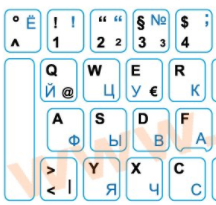
If you know the keyboard layout more or less, you can find cheap keyboard stickers for other languages and alphabets, like this Russian-German keyboard layout. You know, like the stickers on piano keys to help children learn to play it.
If you don’t know the keyboard layout well (yet)
If you are new to a language or you just don’t know the keyboard layout yet, you can best use the following two built-in features on your operating system, like Windows or Apple.
- on-screen keyboard, as described on the rest of this page
- language pack – go to Windows support site
On-screen keyboard for Cyrillic, Arabic, Hebrew, Greek, Devanagari, Hangul and other alphabets
Windows 8 & 10 have t`his on-screen keyboard feature built-in. Even on your normal keyboard, whether it’s QWERTY (prevalent in the US and many European countries) or AZERTY (French speaking regions), QWERTZ (German speaking), you can use the on-screen keyboard to write many different alphabets other than the familiar Latin/Roman script, being this familiar ABC in front of you.
- Windows 8: Go to “Control panel” , then in the section “Ease of Access” press the tab “Start On-screen Keyboard” .
- Windows 10: Search (after pressing the Windows key) for “On-screen Keyboard” It’s built in.
You can run the program by searching for it in the above ways, or by simply pressing the Windows key and then type osk.
Most alphabets (on this page in bold) are used to write many languages (on this page in italic):
Writing Cyrillic letters with an on-screen keyboard
When writing Russian, Ukrainian, Belarusian, Macedonian, (Bosnian-)Serbo-Croatian, Rusyn or another non-Slavic language, you’re going to need the Cyrillic alphabet. Using the on-screen keyboard applies to any application on your PC, such as Word or online, like during a Russian lesson on Duolingo:
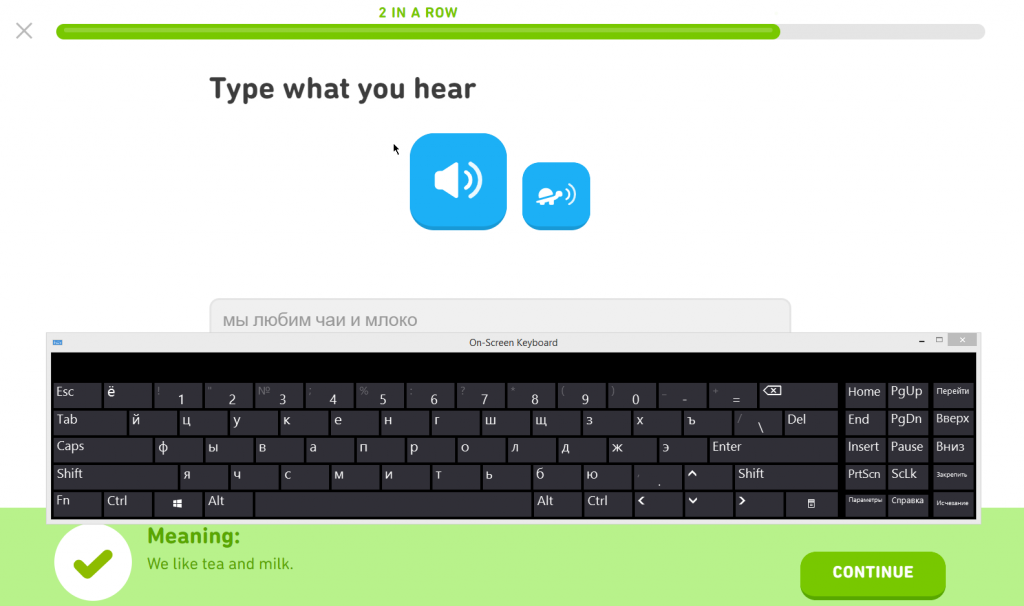
Writing Arabic letters with an on-screen keyboard
You can write Arabic letters for the languages Arabic, Farsi (Persian), Uyghur, Kurdish, Punjabi, Sindhi, Balochi, Pashto, Dari, Lurish, Urdu, Kashmiri, Rohingya, Somali, and Mandinka, among others using the on-screen keyboard anywhere on your PC applications or online, It would look like this in a Duolingo lessons when you want to learn the Arabic alphabet
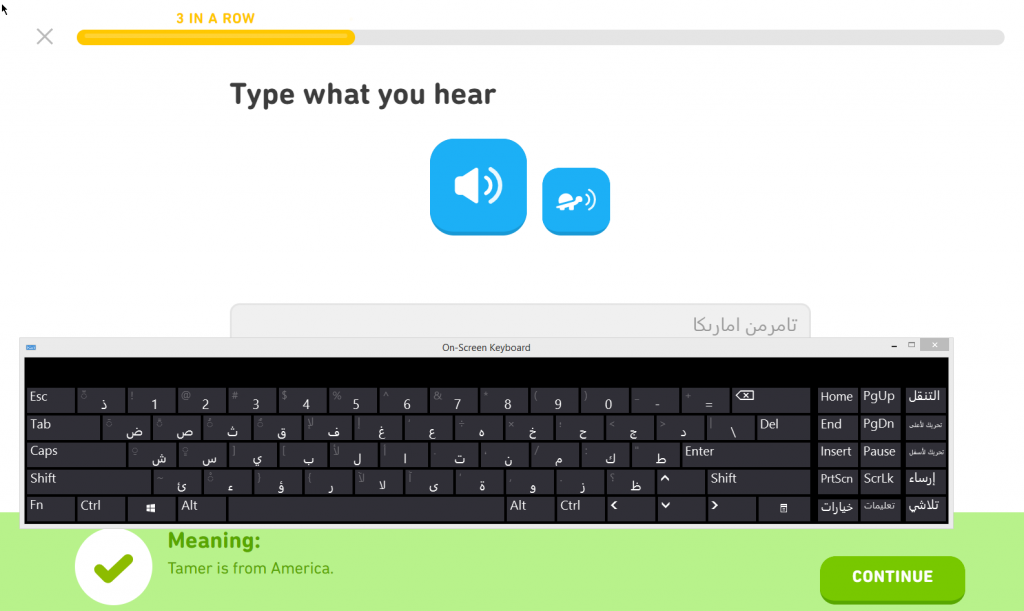
Writing Hebrew letters with an on-screen keyboard
You can write Hebrew alphabet for the Hebrew language (ʿivrít) or for the Yiddish language on any local application on your PC or online. I started Hebrew lessons on Duolingo and wanted to learn how to use the Hebrew alphabet right from the start, instead of using the word bank option, so then the on-screen black add-on pops-up like this:
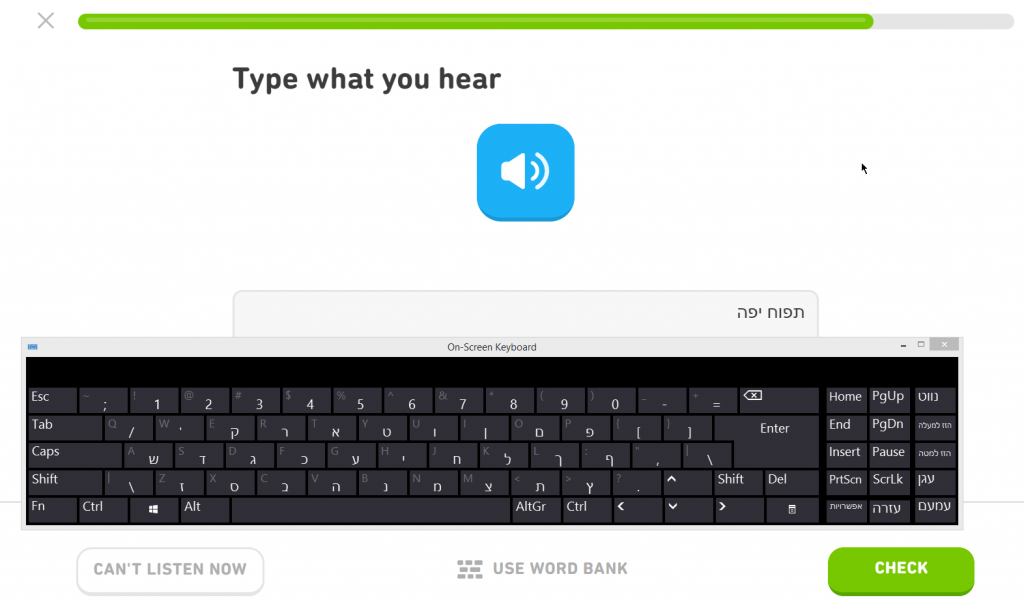
Writing Greek letters with an on-screen keyboard
Not as difficult for people from many European languages, as our roman alphabet, derived from Greek is (therefore) still visibly related to it. That means that typing on your physical keyboard, instead of clicking the Greek letters on the on-screen keyboard is easier when writing in Greek (language). The α is displayed when tapping the Roman equivalent Α, you’ll find the β is on the same place B and you just got to remember some logical ones like υ the ypsilon is on the modern y (not graphically similar u).
You can add accents to vowels by holding the :; key and then the desired vowel key, so ; + α = ά. The same applies to ό, ύ, ί, έ, et cetera.
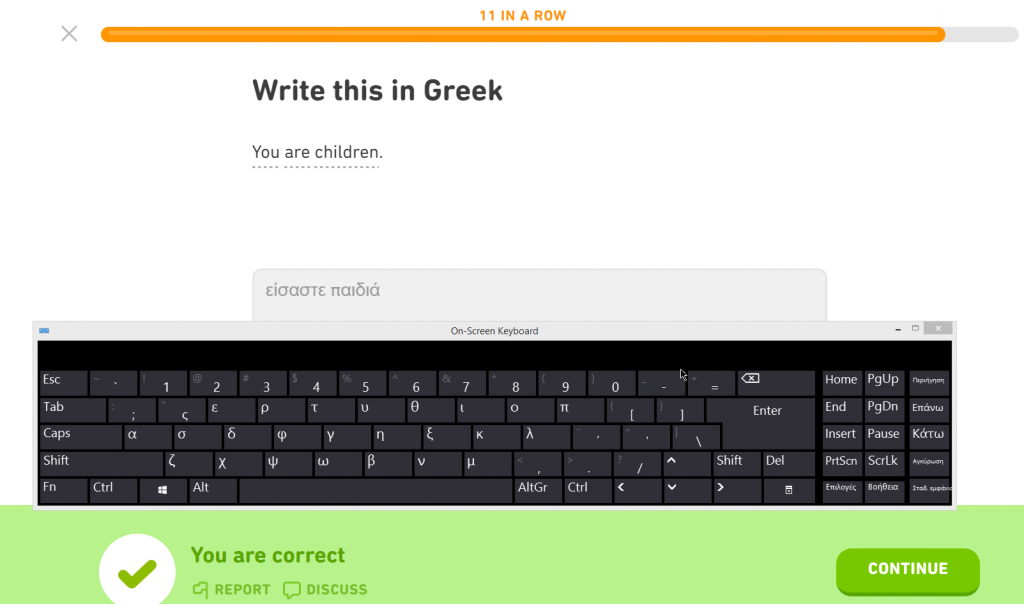
Writing Thai, Hindi, Korean and other alphabets
In the same way as above description to write dozens of languages in Cyrillic, Arabic, Hebrew, Greek letters, you can write the Thai language (in the Thai alphabet) Hindi language (in the Devanagari alphabet), Korean (using the Hangul alphabet) and many other languages in other alphabets. Following the next three steps will open up the three windows as shown below.
- enable the language in the language preferences
- add the language in your system Control Panel
- run the open-screen keyboard (press Windows key ❖ or on Mac command-key ⌘ and then write ‘on-screen keyboard’ or simply ‘osk’. The black keyboard will appear on-screen.
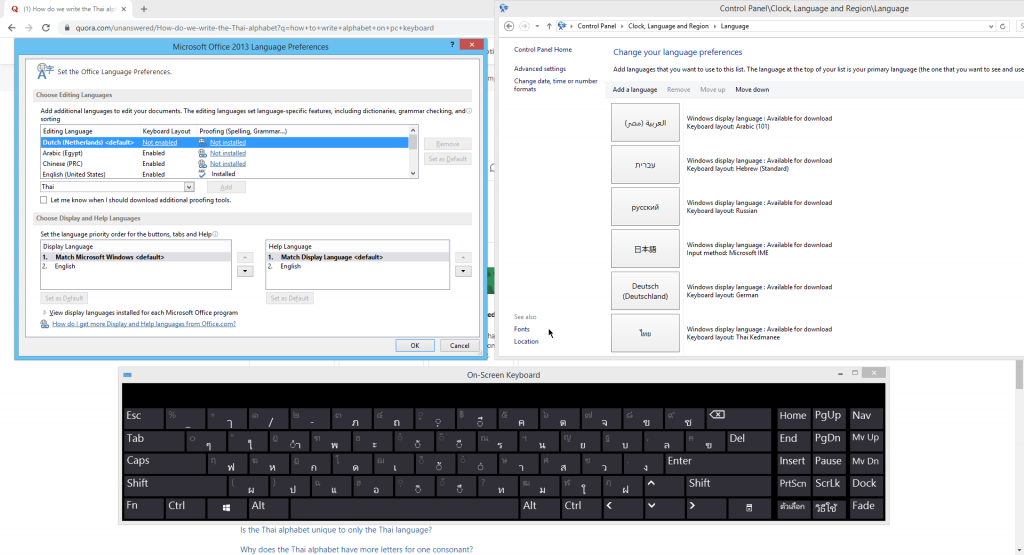
4. You then need to make sure to switch to the language that you want to write in, as described below.
Writing Japanese: Hiragana, Katakana letters and Kanji characters
As you probably know when you’re here: The Japanese language uses three writing systems: the two syllabaries Hiragana and Katakana and Kanji (the Chinese characters). When you want to write Japanese, something extraordinary happens, different than writing in the alphabets and languages mentioned above. You don’t even need to use the on-screen keyboard. Once you add the Japanese language pack, you can just type phonetically. Check out the following Duolingo exercise. When you want to write the translation for the English bank, you just have to write what it sounds like:in Japanese sounds like ginko and the keyboard output is in Hiragana ぎんこう。Once the word is complete, the Kanji output 銀行 is equally generated below the Hiragana version in the drop-down menu.
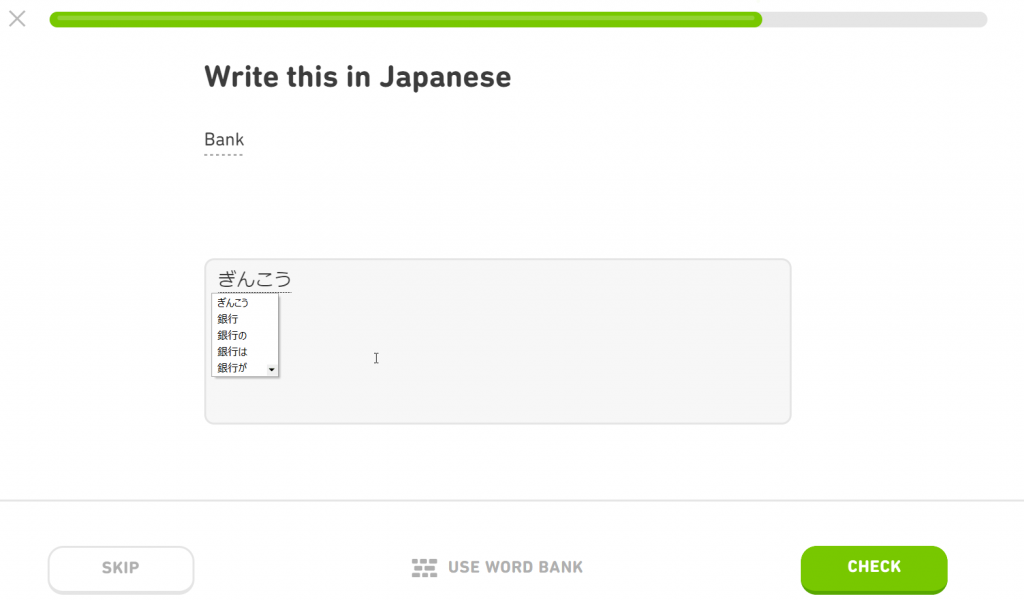
Writing Chinese characters
- Go to your keyboard settings.
- Select Add a Language
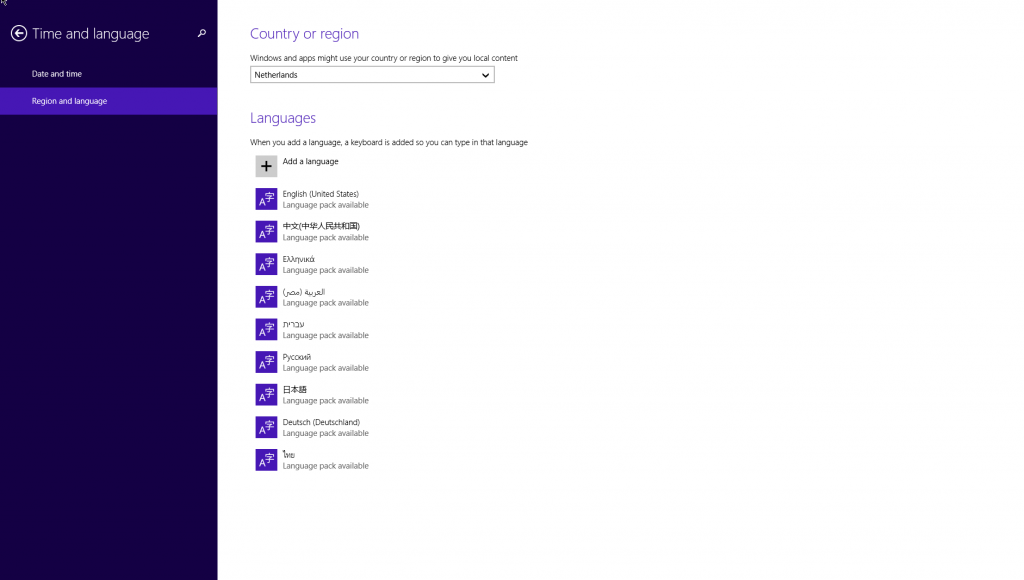
- Add Simplified Chinese
- Possibly there is another step that you need to follow the steps as indicated on the screen.
- Switch between alphabets/scripts as outlined below under the section Switch between languages and alphabets on keyboards.
Once you switched to Chinese, you should be set to write Chinese characters using pinyin. You can use A-Z letters on your current QWERTY keyboard to ‘write’ Chinese characters. All thousands of characters can be searched by writing the pinyin equivalent of the characters.
To write characters like in this sentence: 你 的 朋 友 去 哪 儿?
Use your keyboard letters A-Z to enter pinyin input: Nǐ de péng yǒu qù nǎ ‘er?
Select the right character from the pop-up options: You can opt for the appropriate character by clicking it or, to be faster, use the keyboard only and select the corresponding number next to it.
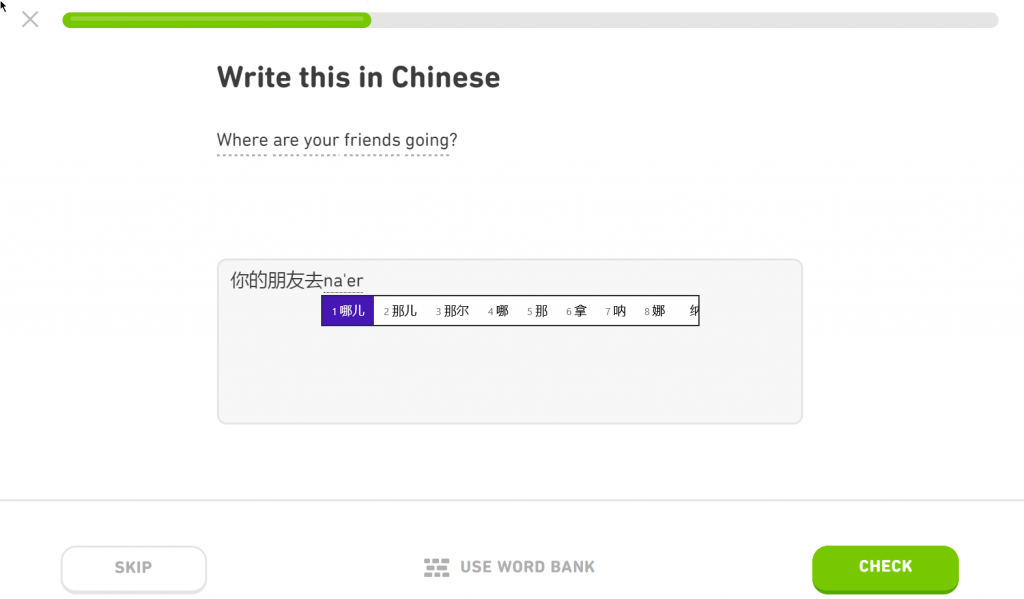
Switch between languages and alphabets on keyboards
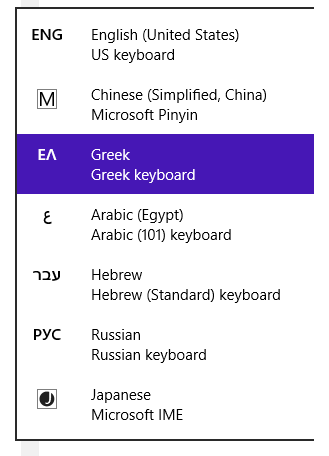
After adding new languages in your settings, you can easily change between languages or alphabets. On Windows you can hold the Windows key ❖ + Space. Likewise, on Mac the shortcut is the command-key ⌘ + Space. That way you can quickly switch to any of your pre-set languages in the drop-down menu. The example shows just one language per writing system (alphabet, syllabary or character set.)